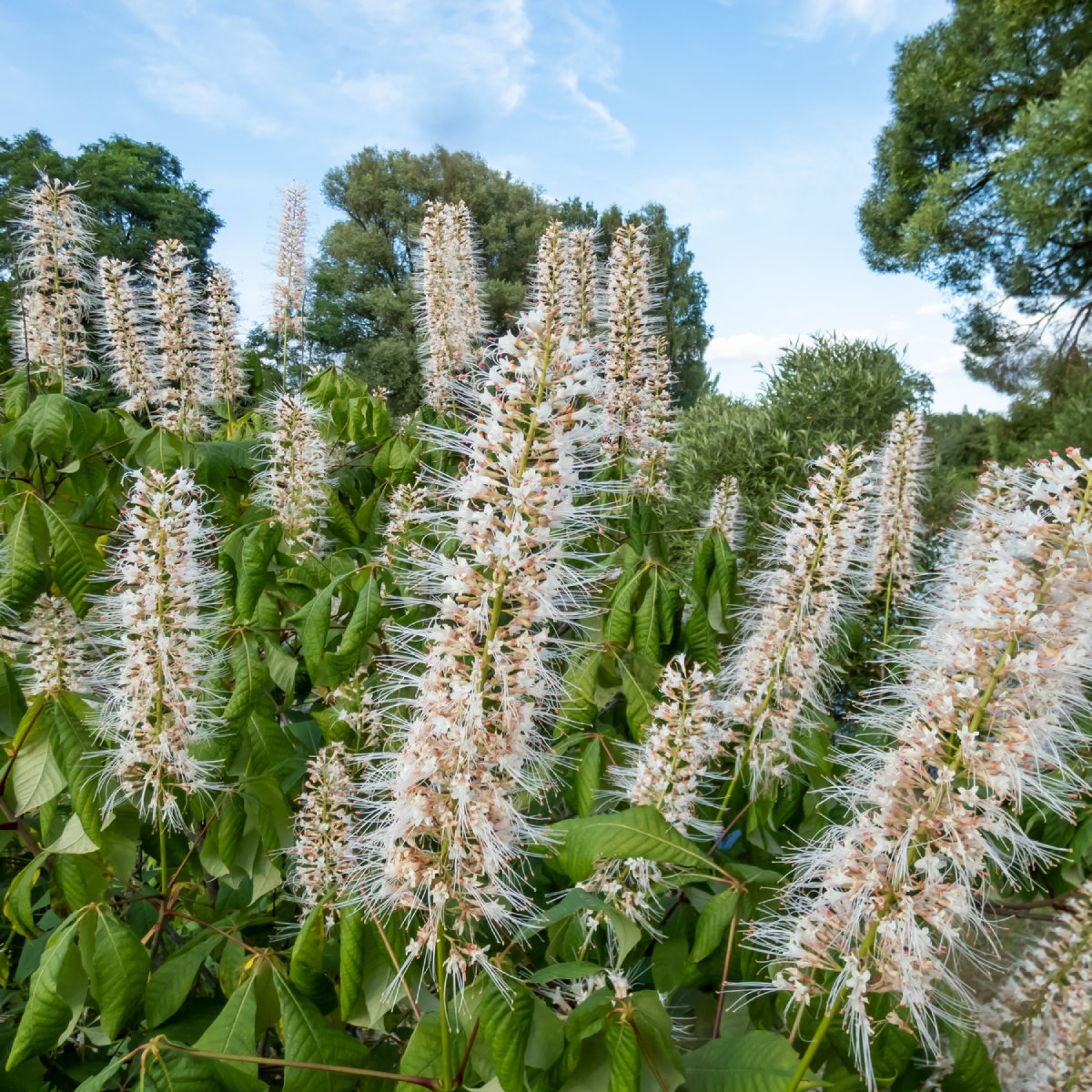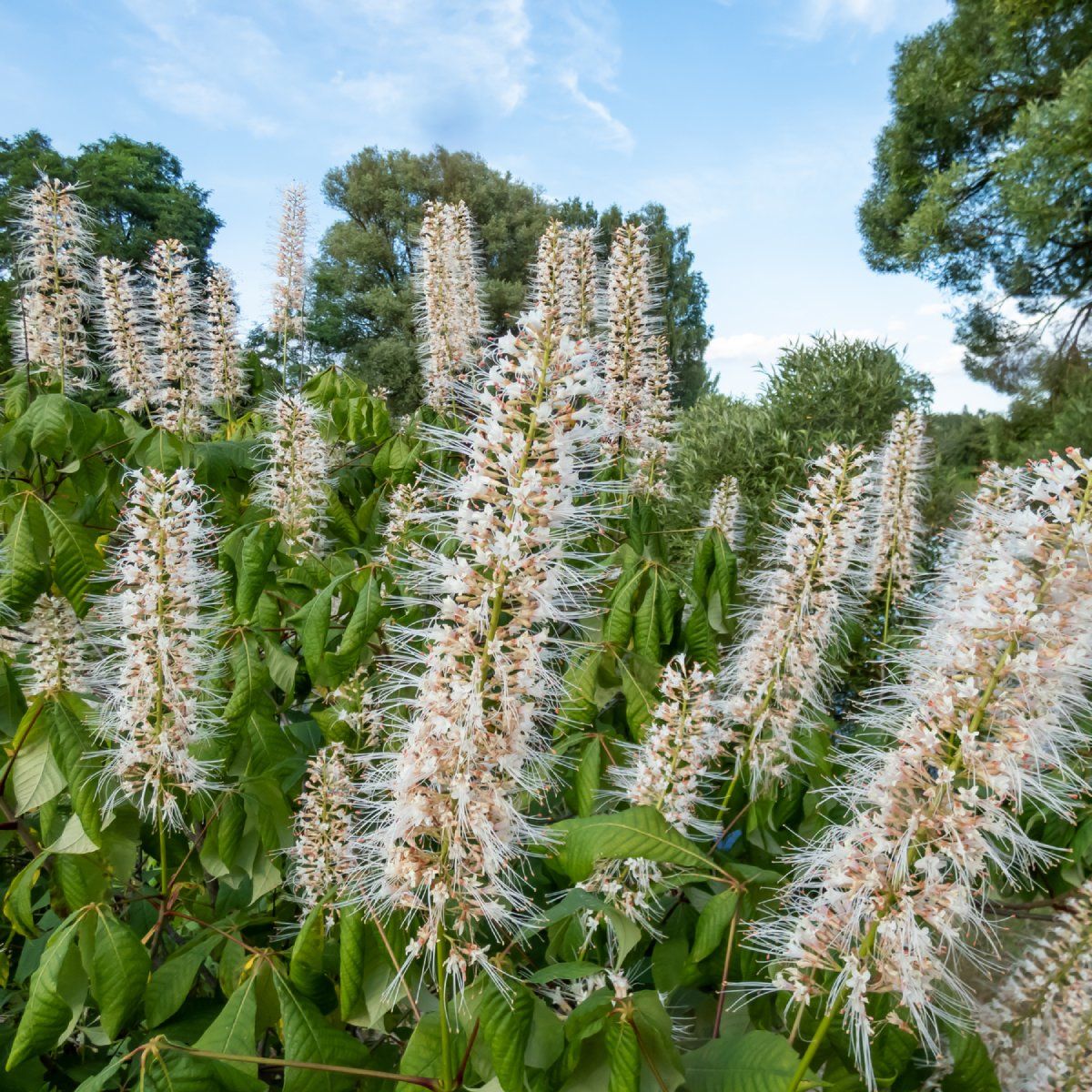Have you ever visited a botanical garden in summer and admired an exotic shrub with masses of erect, white, bottlebrush flowers standing above the saucer-size compound leaves? That’s not an exotic, but a native bottlebrush buckeye bush (Aesculus parviflora ). It is one of the six species of buckeye native to North America.
It’s a curious fact that these native bushes are planted more frequently in European gardens than those in their native US. But you can help change that by installing bottlebrush buckeyes in your backyard. Read on for information about these stunning shrubs and how to take care of them.
Bottlebrush Buckeye Care
A relative of the horse chestnut, bottlebrush buckeye bush thrives in U.S. Department of Agriculture plant hardiness zones 3 through 8, so it could grow easily in gardens in a wide swath of the country. Plant the shrub in full sun or dappled shade.
When it comes to bottlebrush buckeye care, soil is important. The bottlebrush grows best in well-drained, acidic soil to which a generous amount of organic matter has been added. Be sure you select a spot with adequate room since the shrubs grow both vertically and horizontally. They also produce suckers which can be great for borders and hedges, but their sucker-spread is not aggressive.
While pruning is not necessary for plant health or shaping, it can be useful for controlling the size of the bush. However, you will not be able to restrict its growth too much. When it comes to pests and diseases, this native plant is not particularly susceptible and usually grows and blooms without problems if sited correctly and offered regular irrigation.
How to Identify a Bottlebrush Buckeye Shrub Bottlebrush Buckeye Leaf If you are looking for a stand-out shrub for your garden, consider the bottlebrush buckeye shrub. This stately bush grows to at least 8 feet (2.5 m) tall and twice as wide, with masses of huge, compound leaves on its slender branches.
Each bottlebrush buckeye leaf is formed of five to seven elongate leaflets emerging individually from the petiole. Fresh green when they emerge in spring, they turn a rich shade of egg-yolk yellow in the autumn.
But in between comes the real show: a profusion of white bottlebrush flowers – each one some 12 to 18 inches (30-46 cm) long – that appear in June or July. They are held above the mound of foliage on stalks and, with prominent stamens, the blossoms look like candles.
The beauty of this floral display is breathtaking. A supplemental delight: the flowers attract solitary bees, hummingbirds, and butterflies, including eastern tiger swallowtails, giant swallowtails, and monarchs.
Bottlebrush Buckeye Fruit The Aesculus parviflora shrub continues to please throughout the growing season. As the flowers mature, they produce the bottlebrush buckeye fruit. These are seed pods some two inches (5 cm) long, smooth, tan, and shaped like pears. The capsules contain big, red-brown seeds, each with a pale scar which represents the “buck’s eye” of the common name. The capsules release the seeds in early October.
These shiny seeds can easily be used to propagate another bottlebrush buckeye bush or two. Simply plant fresh seeds in a container in moist soil. By spring, the seeds will have germinated and the seedlings will be ready to plant. Note that the plants take about three years for seedling plants to flower.









 + Planting String of Watermelon Succulents
+ Planting String of Watermelon Succulents  with Garden Answer
with Garden Answer


